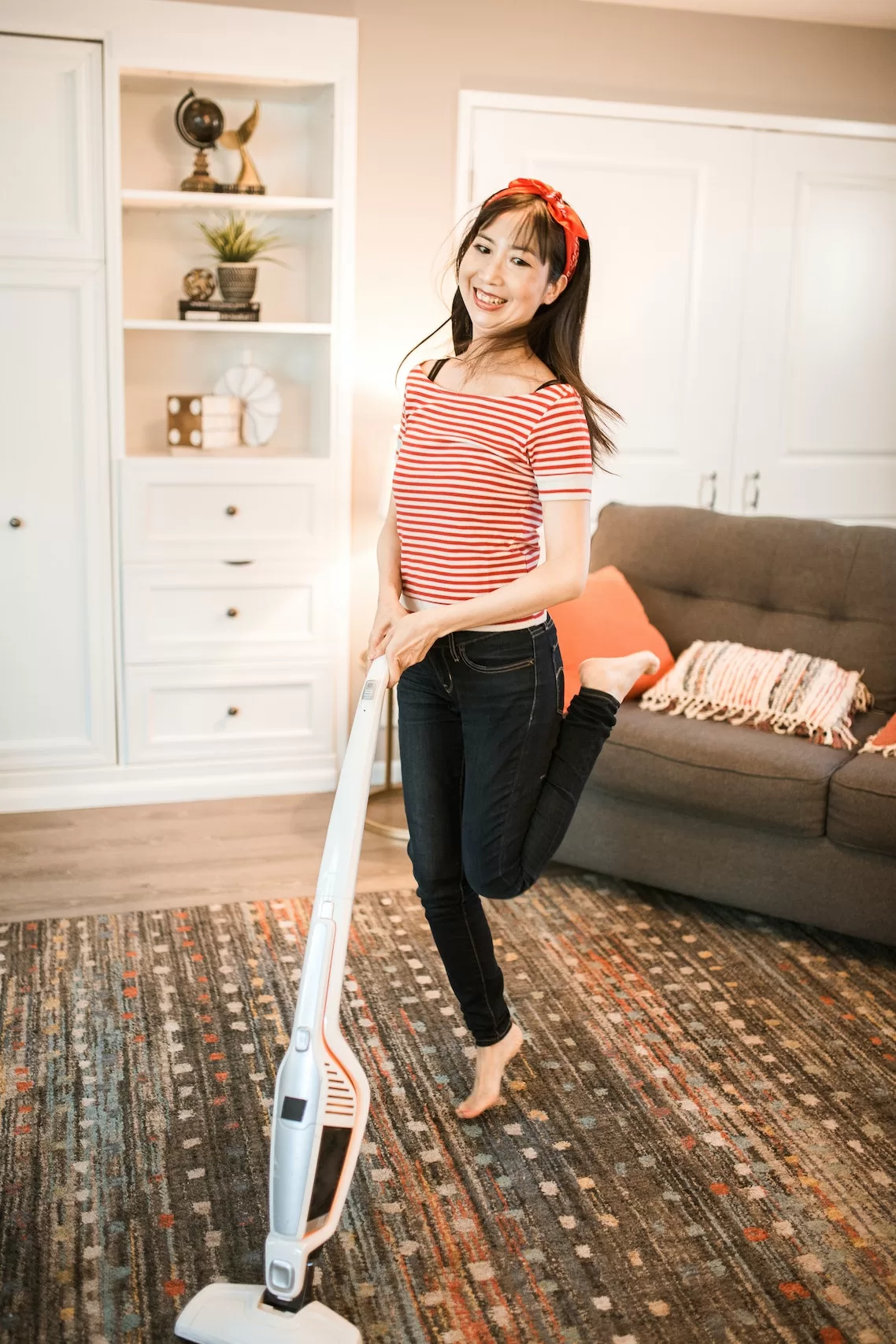
As an asthma sufferer, you know firsthand the importance of breathing clean air. You may already be taking measures to minimize your exposure to triggers like dust, pollen and pet dander. But did you know that regularly cleaning your carpets can also help alleviate asthma symptoms? That’s right! Carpet cleaning offers a range of benefits for those with respiratory issues.
In this post, we’ll explore why carpet cleaning is beneficial for asthmatics, and how it can improve the overall air quality in your home. So, buckle up and get ready to breathe easy!
The Link Between Asthma and Carpet Cleaning
Carpet cleaning can be a great way to help asthma sufferers breathe easier. By removing the dust, pollen, and other allergens that can cause inflammation and asthma symptoms, Carpet Cleaning Crofton can help improve air quality in your home.
Additionally, many carpet cleaners use special chemicals and equipment to clean carpets without causing damage or leaving behind residues. This means that carpets are clean and free of allergens without having to replace them.
If you suffer from asthma, it’s important to keep your home as dust-free as possible. Dust mites are tiny creatures that thrive in environments with a lot of dust particles. When these particles become airborne, they can create an environment where murine (a type of mouse)—a known allergen can proliferate. Murine is responsible for triggering asthma symptoms in people who are sensitive to it.
In addition to keeping your home clean, keeping your carpets clean can also help reduce the number of allergy symptoms you experience. Research shows that dust mite populations decline when carpets are cleaned regularly using proper methods. This means less exposure for people with asthma and reduced chances of developing an allergy to something like pollen.
The Different Types of Carpet Cleaners
There are a few different types of carpet cleaners available on the market today, and each one has its own set of benefits. Steam cleaners are the most common type, and they work by using steam to clean the carpet. They’re fast and effective, but they can also be a little bit noisy. Deodorizing cleaners use chemicals to remove odor particles from the surface of the carpet,
which can be helpful if you have pets or children who tend to produce a lot of odors. These cleaners are slower than steam cleaners, but they’re less likely to cause damage. Dry carpet cleaning methods use vacuums to suck up all the debris from the surface of the carpet and then it’s swept or vacuumed up.
This is typically considered to be the least effective type of carpet cleaning because it doesn’t get deep into the fibers of the carpet. All-in-one machines combine features from several different types of cleaners into one machine, which can make them more efficient than using separate machines for each type of cleaner.
How Carpet Cleaning Affects Asthma
Carpet cleaning can be an effective way to help asthma sufferers breathe easier. In fact, many people with asthma find that their symptoms improve after having their carpets cleaned. This is because carpeting can accumulate dust, dander, and other allergens which can trigger asthma attacks.
Carpet Cleaning Downe also has environmental benefits. By removing the dust and debris from carpets, we’re reducing the amount of waste that needs to be disposed of. It takes around 1,500 pounds of material to produce one pound of garbage – so by reducing the amount of debris on our carpets, we’re helping to reduce our impact on the environment.
Finally, carpet cleaning can help to increase comfort in homes. Many people with asthma find that they experience more breathing problems when they are confined to a small space such as a bedroom or living room. Having clean carpets allows you to move around more freely without having to worry about breathing in dirt or pollen.
The Supplies You’ll Need for Carpet Cleaning
If you have asthma, it’s important to know that carpet cleaning can be a very helpful way to improve your symptoms. In fact, many asthma sufferers find that their symptoms are significantly reduced after they have their carpets cleaned.
There are a few things you’ll need before you get your carpets cleaned. First, you’ll need some carpet cleaning supplies. These supplies include a vacuum cleaner and stain removal products. You’ll also need some water and rags to clean with.
After you’ve gathered your supplies, it’s time to get started. First, start by vacuuming the area where the stains are located. Use the highest setting on your vacuum cleaner to remove all the dirt and debris. Be sure to avoid any areas where the carpet is wet or has Standing Water on it.
Once the area is clean, use the stain removal products to remove any stains that remain. Be sure to apply pressure while using the product to help break up the stain and release any stains that may be hidden underneath them. Once all of the stains have been removed, use warm water and fresh rags to clean up the area.
How to Perform a Basic carpet Cleaning Procedure
Carpet cleaning is one of the best ways to improve your asthma symptoms. Carpeting traps dust, dander, and other allergens that can trigger asthma attacks. Regular carpet cleaning can also remove bacteria, which can cause allergies to worsen.
To clean your carpet, first identify the type of cleaner you’ll need. Carpet Cleaning Pratt’s Bottom come in two main types: enzyme based cleaners and water based cleaners. Enzyme cleaners are made with enzymes that break down the oils and stains in the carpet while water based cleaners use water to dissolve the dirt and oils.
Next, gather your supplies. You’ll need a bucket, mop, scrubber pad, rags or a cloth towel, and either an enzyme or water based cleaner. Make sure to read the instructions on the cleaner bottle before using it so you know how much to use and how long to leave it on the carpet.
To clean a hard surface like wood or tile, first dampen a cloth towel with warm water and wring it out until it’s barely dripping. Use it to wipe down the surface you want to clean. Make sure to get all of the soap off of the surface; otherwise it will be difficult for the cleaner to penetrate deep into the wood or tile.
Once you’ve cleaned everything with soap and water as instructed on your cleaner bottle, mix 1 tablespoon of enzyme cleaner into ¼ cup of hot water and pour it over the
How to Deep Clean a Carpet
If you suffer from asthma, your respiratory system is especially vulnerable to the effects of dust mites and other allergens. In fact, according to the Mayo Clinic, carpeting can be one of the most allergenic surfaces in a home.
Carpet cleaners use high-pressure water and powerful vacuum cleaners to remove all the dirt, dust, and debris that can cause your asthma symptoms. By deep cleaning your carpet every six to eight months, you can help keep your respiratory system healthy.
Here are five tips for deep cleaning a carpet:
Start by removing any furniture or other large pieces of objects from the room. This will make it easier for the cleaner to reach tight corners and hidden areas.
Remove any sweep or brush attachment from the cleaner’s hose before beginning. This will damage the rug surface if it is dragged across it.
Fill up a bucket or spray bottle with warm water and set it near where you plan on working. This will help loosen dirt and debris before it is removed by the cleaner’s suction power.
Place a layer of plastic wrap over the area you wish to clean, then cover that with a heavy layer of newspaper or paper towels. This will prevent dirty water and dirt from being spread throughout your home while the carpet is being cleaned.
Conclusion
Asthma is a chronic respiratory disease that can be debilitating and costly to treat. One of the best ways to prevent asthma episodes and improve your quality of life is to clean your carpets regularly.
Carpet cleaning not only removes dirt, dust, and allergens from the surface of the carpet, but it also deep cleans below the flooring by removing debris and bacteria that can cause asthma symptoms. If you or a loved one suffers from asthma, consider scheduling regular carpet cleaning to help maintain good health and avoid costly emergency room visits.





